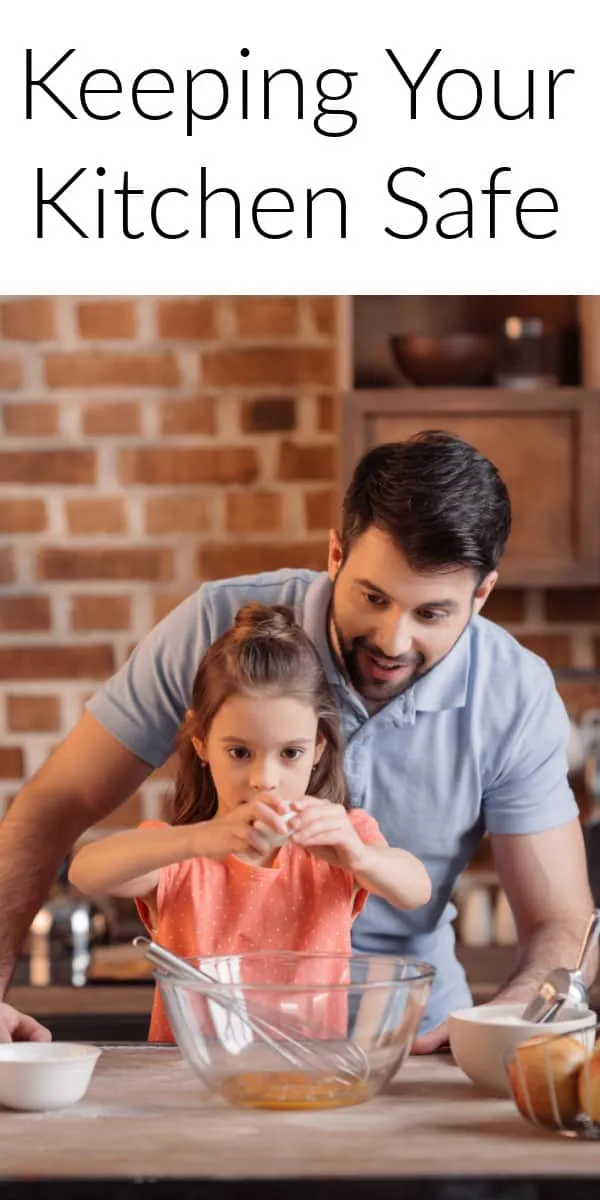Understanding DIY Kitchen Decor Safety
Embarking on DIY kitchen decor projects is a fantastic way to personalize your space and infuse it with your unique style. However, safety should always be your top priority. The kitchen, a hub of activity and potential hazards, demands careful attention to safety protocols. This guide aims to equip you with essential knowledge and actionable tips to ensure your DIY kitchen decorating endeavors are not only creative but also safe. From sharp tools and electrical work to the use of paints and dealing with dust, we’ll cover the key aspects of a safe DIY project. Remember, a safe workspace is a happy workspace, and taking the time to prioritize safety will allow you to enjoy the entire process and the final results without any worries.
Common Kitchen Decor Hazards
The kitchen presents several unique hazards that DIY enthusiasts must address. These hazards can range from the obvious, such as sharp objects and electrical outlets, to less apparent risks, like exposure to chemicals in paints and finishes. Overlooking these potential dangers can lead to accidents, injuries, and even long-term health problems. Understanding these hazards is the first step in mitigating them. This includes being aware of the proper handling of tools, ensuring adequate ventilation, using appropriate protective gear, and understanding how to respond in case of an emergency. By being proactive and informed, you can create a safe environment that allows you to focus on the joy of decorating your kitchen.
Sharp Objects and Cutting Tools
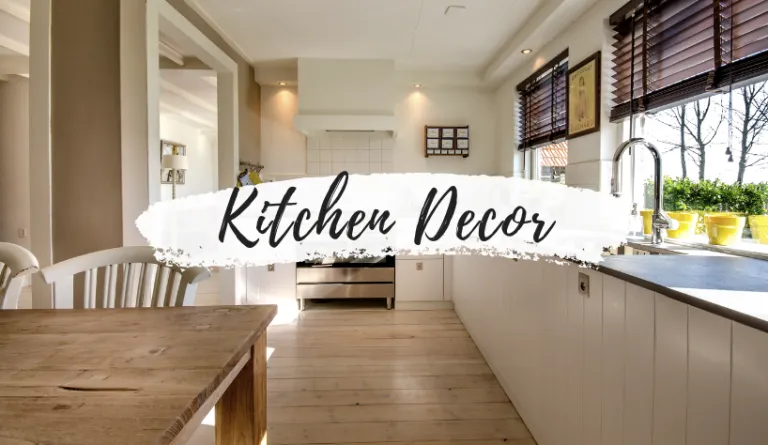
Knives, box cutters, scissors, and other sharp instruments are essential for many DIY kitchen projects. However, they also pose a significant risk of cuts and lacerations. Always use these tools with caution, ensuring you have a stable grip and that the cutting surface is secure. Never leave sharp objects unattended or within reach of children or pets. Consider using safety knives with retractable blades and protective gloves when cutting or slicing materials. When you’re not using these tools, store them in a secure location, ideally a locked drawer or a tool chest. Regular maintenance, such as sharpening knives, is also essential to maintain their effectiveness and safety.
Electrical Safety
Working with electricity can be extremely dangerous, and kitchens often have numerous electrical outlets and appliances. Always turn off the power at the breaker before working on any electrical project. If you’re unfamiliar with electrical work, it’s best to hire a qualified electrician. Make sure all electrical cords are in good condition and are not frayed or damaged. Avoid overloading outlets and be cautious of water and electricity mixing. Always use GFCI (Ground Fault Circuit Interrupter) outlets in the kitchen to protect against electrical shock. Following these safety tips will significantly reduce the risk of electrical accidents and keep your kitchen a safe space.
Working with Paints and Finishes
Paints, varnishes, and other finishes can contain volatile organic compounds (VOCs) that can be harmful if inhaled. Always work in a well-ventilated area when using these products. Consider using low-VOC or no-VOC paints to minimize exposure. Wear a respirator mask, gloves, and eye protection to prevent skin and inhalation exposure. Read and follow the manufacturer’s instructions carefully. Proper disposal of paint and finish materials is also crucial. Avoid pouring paint down the drain; instead, dispose of it at a designated waste disposal site. By taking these precautions, you can safeguard your health while enhancing the aesthetic of your kitchen.
Chemical Exposure Prevention
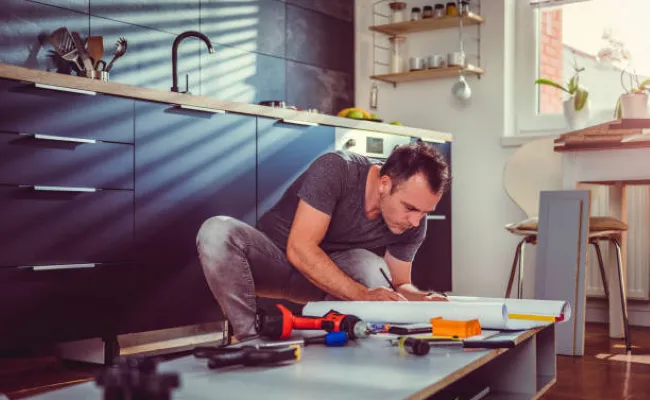
Beyond paints and finishes, many DIY projects involve chemicals such as cleaning agents, adhesives, and sealants. Always read the product labels and understand the potential hazards. Wear appropriate personal protective equipment (PPE), including gloves, eye protection, and a respirator, to avoid skin contact and inhalation of fumes. Work in a well-ventilated area, or even outdoors, whenever possible. Store chemicals properly in a secure and well-ventilated area, away from children and pets. If you experience any adverse reactions, such as skin irritation or difficulty breathing, seek medical attention immediately. By being informed and taking preventive measures, you can minimize the risk of chemical exposure and ensure a safe DIY experience.
Dealing with Dust and Debris
Sanding, sawing, and other DIY tasks create dust and debris that can be irritating and even hazardous to your health. Always wear a dust mask or respirator to prevent inhaling dust particles. Use a vacuum with a HEPA filter to clean up dust, rather than sweeping, which can stir up dust and increase exposure. Keep the work area clean and well-ventilated to minimize dust accumulation. Dispose of debris properly, following local regulations. If you’re working with materials that may contain lead or asbestos, take extra precautions, and consider hiring professionals for safe removal. Taking these measures can protect your respiratory system and overall health during your DIY kitchen projects.
Fire Safety in the Kitchen
The kitchen is a high-risk area for fire. When undertaking DIY projects, always be mindful of fire hazards. Keep flammable materials away from heat sources, such as stoves, ovens, and electrical appliances. Ensure your smoke detectors and carbon monoxide detectors are in working order and have fresh batteries. Keep a fire extinguisher readily accessible and know how to use it. Never leave heat sources unattended. If you’re using electrical tools, inspect the cords and ensure they are not damaged. By taking these fire safety precautions, you can minimize the risk of fire and protect yourself and your home.
Choosing Safe Materials for Kitchen Decor
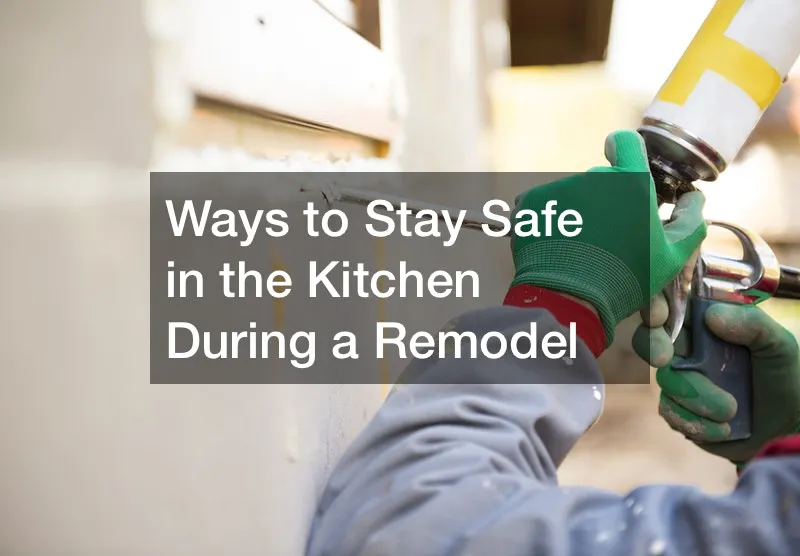
When selecting materials for your DIY kitchen decor, prioritize safety. Opt for non-toxic and low-VOC products. Choose materials that are easy to clean and maintain, as kitchens are prone to spills and messes. Avoid materials that are highly flammable or prone to water damage. Consider using sustainable and eco-friendly options to reduce your environmental impact. Research the safety profiles of any materials you plan to use, especially if you have children or pets. Choosing the right materials not only ensures the safety of your space but also contributes to a healthier environment for everyone.
Safe DIY Kitchen Decor Tip 1 Planning
Careful planning is the foundation of any safe and successful DIY project. Before you begin, create a detailed plan that includes a list of all the materials and tools you’ll need. Research the project thoroughly and understand all the steps involved. Consider the layout of your kitchen and how your project will interact with existing appliances and fixtures. This initial planning phase allows you to anticipate potential hazards and take steps to mitigate them. Develop a safety checklist to ensure you have the necessary PPE and safety equipment. Proper planning not only enhances safety but also streamlines the project, making it more efficient and enjoyable. Always measure twice and cut once, and never rush a project.
Safe DIY Kitchen Decor Tip 2 Ventilation
Adequate ventilation is crucial, especially when working with paints, finishes, and adhesives that release harmful fumes. Open windows and doors to allow for good airflow. If natural ventilation is insufficient, use fans to circulate the air. Consider using a portable air purifier to remove airborne particles and VOCs. When working indoors, aim to create a cross-breeze. Make sure your kitchen is well-ventilated before, during, and after your project, to ensure fumes dissipate and do not accumulate. Prioritizing ventilation ensures a healthier and more comfortable working environment, reducing your exposure to potentially harmful substances.
Safe DIY Kitchen Decor Tip 3 Protective Gear
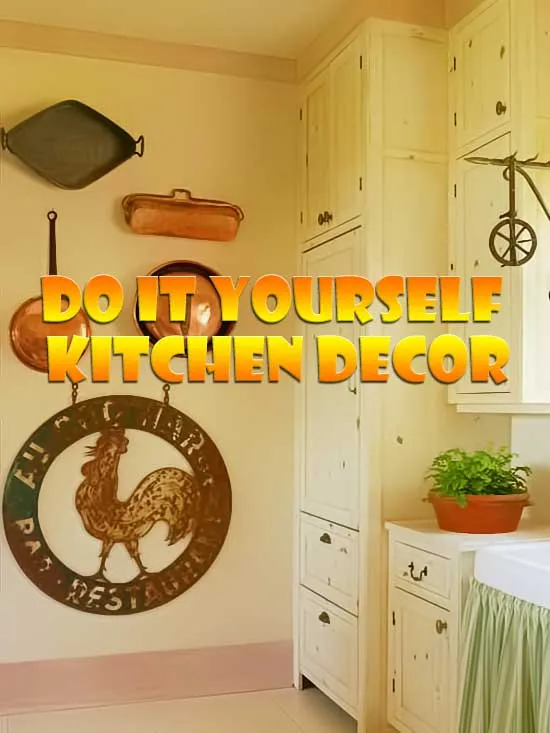
Always wear the appropriate personal protective equipment (PPE) for your DIY projects. This includes safety glasses or goggles to protect your eyes from debris, a dust mask or respirator to prevent inhalation of dust and fumes, gloves to protect your hands from chemicals and cuts, and closed-toe shoes to protect your feet. Consider wearing long sleeves and pants to protect your skin. Ensure that your PPE fits properly and is in good condition. Replace any damaged or worn-out PPE immediately. Wearing appropriate PPE is the simplest way to protect yourself from common hazards and injuries in the kitchen.
Safe DIY Kitchen Decor Tip 4 Proper Storage
Proper storage is essential to ensure the safety of your materials, tools, and your kitchen environment. Store all tools in a designated place, such as a toolbox or tool chest, away from children and pets. Keep paints, chemicals, and other hazardous materials in their original containers, with the labels clearly visible, and store them in a locked cabinet or out of reach. Make sure flammable materials are stored away from heat sources and direct sunlight. Properly store all materials after use and return them to their designated places. Good storage habits reduce the risk of accidents and make it easier to keep your workspace clean and organized.
Safe DIY Kitchen Decor Tip 5 Material Selection
Choose your materials carefully, considering both aesthetics and safety. Opt for non-toxic and low-VOC products to reduce exposure to harmful chemicals. Select materials that are durable and easy to clean, particularly in the kitchen where spills and stains are common. Avoid materials that are highly flammable or prone to water damage. Research the safety profiles of any materials you plan to use, especially if you have children or pets. Consider using sustainable and eco-friendly options. By making informed choices about the materials you use, you can create a safe and healthy environment in your kitchen.
Safe DIY Kitchen Decor Tip 6 Electrical Precautions
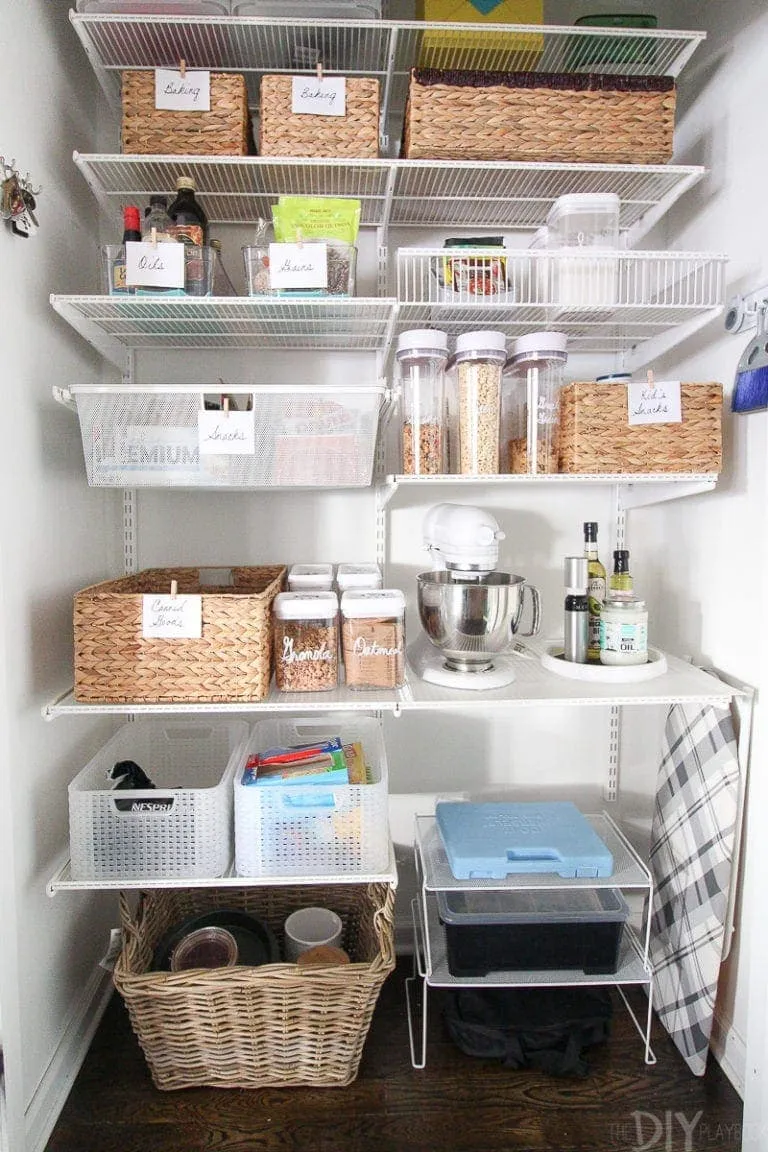
Always prioritize electrical safety when working in the kitchen. Turn off the power at the breaker before working on any electrical project. If you are unsure about electrical work, it’s best to hire a qualified electrician. Ensure all electrical cords are in good condition and are not frayed or damaged. Avoid overloading outlets. Use GFCI outlets to protect against electrical shock. Avoid mixing water and electricity. Always work with dry hands and on a dry surface. These simple precautions can prevent serious electrical accidents.
Safe DIY Kitchen Decor Tip 7 Fire Safety Measures
Implement fire safety measures to protect your home and family. Ensure that smoke detectors and carbon monoxide detectors are installed and in working order. Test them regularly and replace batteries as needed. Keep a fire extinguisher readily accessible and know how to use it. Never leave heat sources unattended. Be cautious when using electrical tools and appliances. Keep flammable materials away from heat sources, such as stoves and ovens. Always have an escape plan in case of a fire.
Safe DIY Kitchen Decor Tip 8 First Aid Knowledge
Familiarize yourself with basic first aid procedures. Keep a well-stocked first aid kit readily accessible. Know how to treat cuts, burns, and other common injuries. Be prepared to call emergency services if necessary. If you are working with chemicals, know the recommended first aid procedures. Having first aid knowledge and supplies can help you respond quickly and effectively to minor injuries and emergencies. Consider taking a first aid and CPR course to enhance your preparedness.
Safe DIY Kitchen Decor Tip 9 Child and Pet Safety
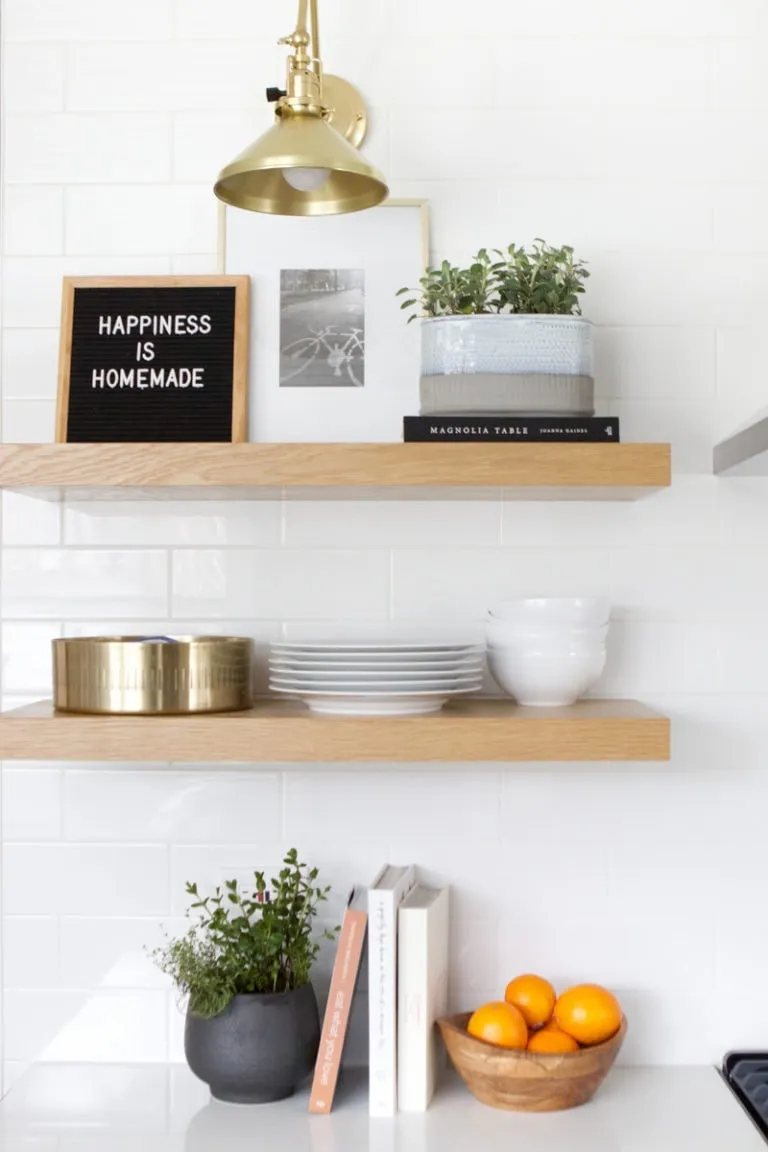
If you have children or pets, take extra precautions. Keep all tools, materials, and chemicals out of their reach. Supervise children and pets closely when they are in the work area. Use child-resistant caps on paint cans and chemical containers. Consider using baby gates or pet barriers to restrict access to the work area. Teach children about the dangers of tools and chemicals. Make sure pets can’t access any unsafe materials. Creating a safe environment for children and pets is crucial when undertaking DIY projects.
Safe DIY Kitchen Decor Tip 10 Disposal of Materials
Proper disposal of waste materials is essential for safety and environmental protection. Follow local regulations for disposing of paint, chemicals, and other hazardous materials. Never pour paint or chemicals down the drain. Properly dispose of sharp objects, such as blades and broken glass, to prevent injuries. Recycle materials whenever possible. Reduce waste by planning carefully and purchasing only the materials you need. By following proper disposal procedures, you can protect the environment and keep your kitchen safe.
Resources for Safe DIY Kitchen Decorating
Numerous resources are available to help you ensure safety while DIY kitchen decorating. Consult the Occupational Safety and Health Administration (OSHA) website for guidelines on workplace safety. Check your local government’s website for information on waste disposal and recycling. Read product labels carefully and follow the manufacturer’s instructions. Seek advice from experienced DIYers or professionals if you are unsure about any aspect of your project. There are many online resources, including blogs, videos, and forums, offering DIY safety tips. By leveraging these resources, you can equip yourself with the knowledge and support you need for a safe and successful project.
